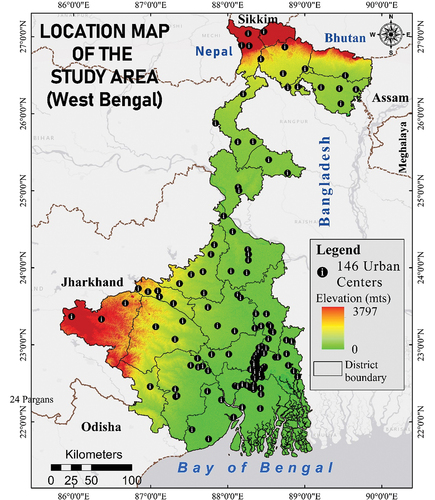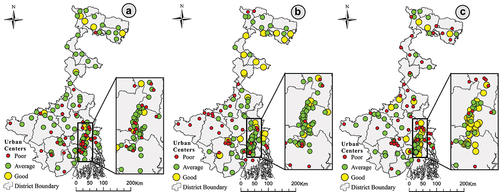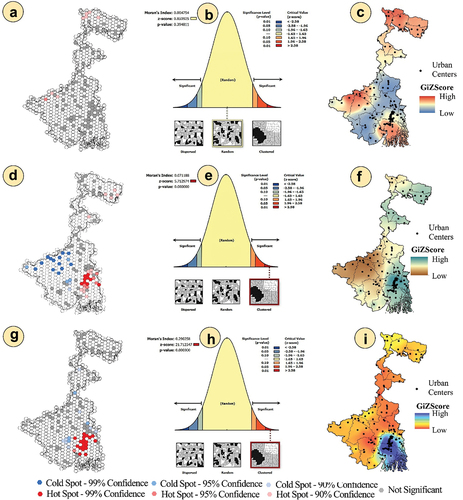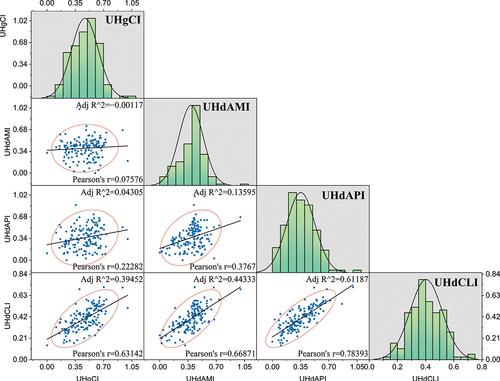Figures & data
Figure 1. Location map of the study area. The map showing the selected 146 urban centres, districts boundary and relief.

Table 1. Selected dimensions, indicators, and variables for the assessment of Urban Household Condition of Living.
Table 2. Summary statistics of the selected variables.
Figure 4. Spatial pattern of selected variables used for the present study. (a-f) Urban housing condition variables which includes predominant material of roof (RF), predominant wall materials (WA), ownership status (OS), No room (NR), one room (OR), and more than one room (MOR); (g-l) Urban household amenities variables which includes drinking water (W), kitchen availability (KT), electricity availability (EL), no electricity (NE), no waste water-outlet (NWO) connections and water-seal latrine facility (LT); (m-r) Urban household asset possession variables which includes availability of air conditioner, refrigerator (RF), no communications (NCM), no motorize wheelers (NW), washing machine (WM) and computer/laptop availability (CL).

Table 3. Variable-based Moran’s I index, z-score, and pattern of spatial association.
Figure 5. Thematic variations of computed sub-indexes (a) Urban Housing Condition index (UHgCI); (b) urban household amenities (UHdAMI); and (c) urban household assets possession (UHdAPI).

Figure 6. Hotspots & coldspots showing spatial clustering pattern, autocorrelation and zonal distribution of computed sub-indexes. (a-c) UHgCI, (d-f) UHdAMI, (g-i) UHdAPI.

Figure 7. Spatial variation of Composite Urban household condition of living index (UHdCLI). (a) Thematic variation of UHdCLI based on index value, (b & c) spatial pattern and autocorrelation of UHdCLI (d) district wise spatial zonation of UHdCLI.

Table 4. Spatial zonation based on GiZ by inverse distance weighted (IDW) interpolation based on urban household condition of living index (UHdCLI).
Figure 8. Scatter matrix plot showing the Pearson’s correlation with adjusted R2 for the constructed UHgCI, UHdAMI, UHdAPI and UHdCLI. The ellipse showing the distribution of Urban centres with 95% confidence.

Table 5. Summary of regression analysis for model consistency.
Data availability statement
The governmental data used in this study is freely available from SECC, India.


